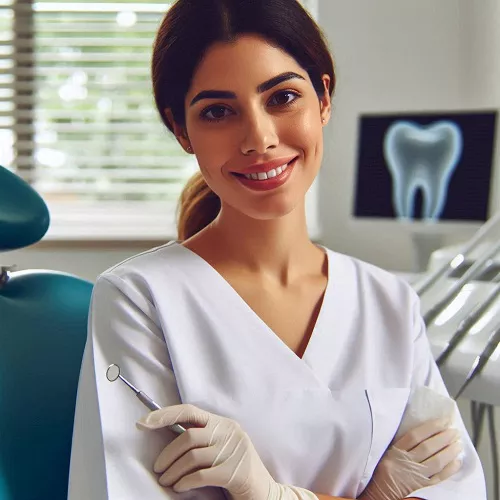Orthodontic problems refer to various issues related to the alignment of teeth and jaws. These problems can affect people of all ages, from children to adults. While some orthodontic issues may be mild and only require minimal intervention, others can be more severe and may impact oral health and overall well-being. In this article, we will explore the common orthodontic problems that individuals may encounter, their causes, and treatment options available to address them effectively.
Malocclusions: The Basics
Malocclusions, or misalignments of the teeth and jaws, are among the most common orthodontic problems. They can manifest in different ways, including:
Overcrowding: This occurs when there isn’t enough space in the jaw for all the teeth to fit properly. As a result, teeth may overlap or become crooked.
Spacing Issues: On the other hand, excessive spacing between teeth can also be a concern, leading to gaps that affect the overall appearance and functionality of the smile.
Overbite: An overbite refers to a condition where the upper front teeth significantly overlap the lower front teeth when biting down.
Underbite: Conversely, an underbite occurs when the lower front teeth protrude forward, overlapping the upper front teeth.
Crossbite: A crossbite occurs when some of the upper teeth sit inside the lower teeth rather than outside, causing misalignment and potential bite issues.
Open Bite: An open bite is characterized by a gap between the upper and lower front teeth when the mouth is closed, which can affect speech and chewing.
SEE ALSO: The 7 Most Common Orthodontic Procedures
What Are The Causes of Orthodontic Problems?
Orthodontic problems can have various causes, including:
Genetics: Inherited factors play a significant role in determining the size and shape of the jaw, as well as the alignment of teeth.
Early Childhood Habits: Thumb sucking, prolonged pacifier use, and tongue thrusting can exert pressure on teeth and jaws, leading to misalignments.
Jaw Development Issues: Irregular growth patterns of the jaw can contribute to malocclusions such as overbites, underbites, and crossbites.
Tooth Loss: Missing teeth can cause neighboring teeth to shift positions, resulting in spacing issues and misalignments.
Trauma: Accidents or injuries to the face and jaw can disrupt the alignment of teeth and require orthodontic treatment to correct.
Impact of Orthodontic Problems
Orthodontic problems can impact oral health, aesthetics, and overall quality of life in several ways:
Difficulty Chewing: Misaligned teeth may not come together properly when chewing, leading to difficulties in breaking down food effectively.
Speech Impediments: Certain orthodontic issues, such as open bites or tongue thrusting habits, can affect speech clarity and articulation.
Oral Hygiene Challenges: Crooked or crowded teeth can be harder to clean thoroughly, increasing the risk of tooth decay, gum disease, and other oral health issues.
Self-Esteem and Confidence: Aesthetic concerns related to misaligned teeth can impact self-confidence and social interactions, especially in adolescence and adulthood.
Treatment Options for Orthodontic Problems
Fortunately, advances in orthodontic technology and techniques offer a range of treatment options to address common orthodontic problems effectively. These may include:
Traditional Braces: Metal or ceramic brackets and wires are used to gradually move teeth into proper alignment over time.
Clear Aligners: Transparent aligner trays, such as Invisalign, offer a discreet and removable alternative to traditional braces for mild to moderate cases.
Palatal Expanders: These devices are used to widen the upper jaw, creating more space for crowded teeth and addressing crossbite issues.
Space Maintainers: In cases of premature tooth loss, space maintainers may be used to prevent neighboring teeth from shifting and causing alignment problems.
Orthognathic Surgery: For severe malocclusions or jaw discrepancies, surgical intervention may be necessary to correct the underlying structural issues.
Retainers: After active orthodontic treatment, retainers are often prescribed to maintain the newly achieved alignment and prevent relapse.
Importance of Early Intervention
Early detection and intervention of orthodontic problems can significantly improve treatment outcomes and reduce the complexity of correction. Dentists and orthodontists recommend children undergo an orthodontic evaluation by age seven to assess jaw development and detect potential issues early on.
Conclusion
In conclusion, common orthodontic problems like malocclusions can have a significant impact on oral health and overall well-being. Understanding the causes, effects, and available treatment options is crucial for addressing these issues effectively. By seeking timely orthodontic care and partnering with skilled dental professionals, individuals can achieve optimal dental alignment, functionality, and aesthetics for a healthier smile and improved quality of life.

